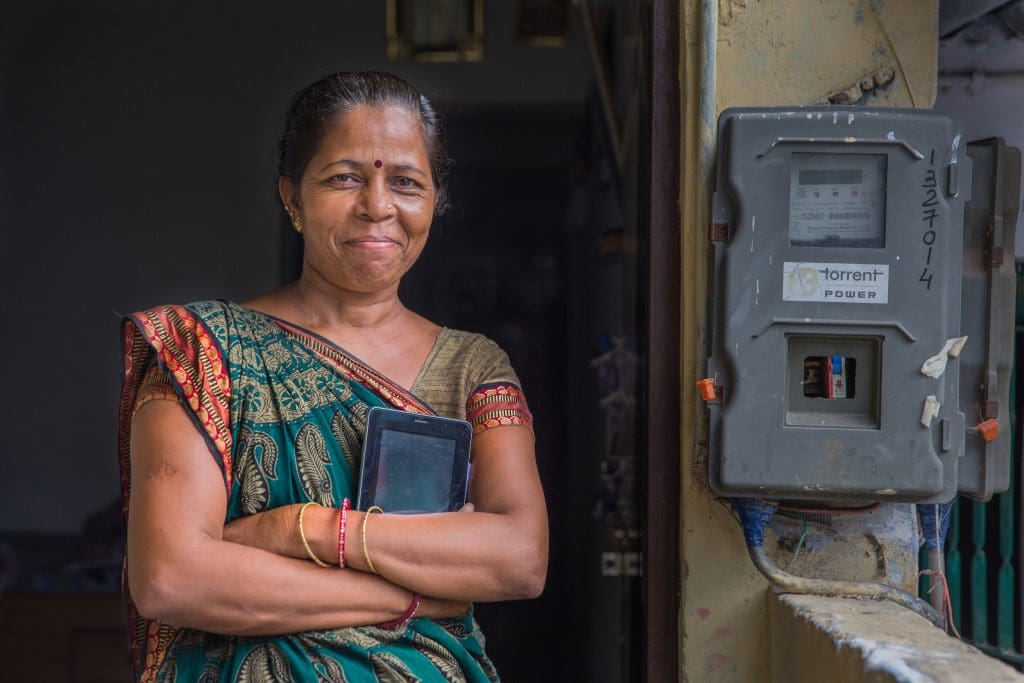
Power Sector
Use these tools for the power sector to explore gender opportunities, screen potential investments with a gender lens, and advise investees on how to better integrate gender in project operations, supply chains, and workplaces. Then follow the evidence to learn where gender matters most in the power sector Gender Materiality Map.
Understand opportunities to better integrate gender in a project / company’s operations and supply chain.
Complete a questionnaire about the project / company to generate a personalized gender scorecard.
CASE STUDIESExplore how leading power infrastructure projects / companies integrate gender into their operations, and the resulting business and social benefits.
Briefing: Gender & Power Infrastructure

Globally, in infrastructure sectors – such as energy, water, and transport – women remain vastly underrepresented.1 Power infrastructure in particular has been historically dominated by men across the value chain, from construction and operation of plants, to technical roles in electricity generation, transmission, and distribution. A recent USAID study of 14 power distribution companies in Eastern Europe, South Asia, the Middle East and Africa found that women’s employment in the utilities averaged 13%, with a range of less than 1% in Pakistan to 30% in Ukraine. While women were found working in all departments, they were concentrated in areas such as human resources and finance, with employment in technical field operations, high-voltage line operations, and field maintenance all skewing heavily male.
Gender disparities in power infrastructure may be explained in part by fewer women applying to work in the sector, reflecting labor force stereotypes and barriers to STEM (science, technology, engineering, and mathematics) education that girls face earlier in the talent pipeline. Women who have joined the sector may go on to experience barriers to their advancement, such as organizational biases in hiring for certain functions, few workplace accommodations for women’s needs as employees, a lack of professional development opportunities, and ineligibility for promotions or senior leadership roles.
Yet the diversity dividend has proven to be a valuable proposition across sectors, and for power companies in particular. An annual review of the world’s 200 highest revenue power and utility companies found that the top 20 most gender diverse companies (in terms of women on boards and senior management) outperformed the bottom 20 by a 1.07% difference in return on equity (ROE), representing millions of dollars of profit loss as utilities are asset-heavy companies. Like all industries, power stands to gain greatly from incorporating a gender lens at the top level.
In addition to women on boards and in senior leadership, a gender diverse employee base is key for power companies to remain efficient and responsive in challenging environments with rising cost pressures. In the years to come, women will be needed to fill the increasing talent demand in the power sector, and their participation in technical and professional roles can contribute greatly to company effectiveness. Overall, increasing gender diversity in the male-dominated power sector leads to positive impacts across the value chain, including:
- Sustainability benefits through involving women during the development of energy infrastructure, for example in constructing renewable (solar, wind, tidal, biomass, hydropower, geothermal) and fuel-based (oil, gas, coal, nuclear) energy projects. When women and men from the site community are protected and included as stakeholders, project outcomes are more likely to be successful. Large plants and other energy projects have a responsibility to mitigate risks women face related to resettlement, compensation, health, safety, and gender-disparate use of natural resources. By consulting with women and men in the community, creating opportunities for women in procurement and construction, and supporting equal access to education for girls and boys, the implementing corporation (or public-private partnership) may also benefit from an enhanced reputation and a long-term investment in the community that can support the sustainability of the project for years to come.
- Proactively promoting women’s employment in all functions allows power companies to enjoy the diversity dividend, whether primarily involved in energy generation and transmission, transportation and storage, electricity distribution, or multiple segments of the value chain. Greater gender diversity across all areas and levels in a company can increase problem solving and innovation capacity, resulting in more effective teams and better bottom lines.
- In distribution companies (DISCOs) in particular, there is a strong case for gender integration, as electricity distribution is the segment that interfaces with individual customers. Women can contribute to related field-based efficiencies, for example by reducing ATC&C (average technical commercial and collection) losses through more effective customer relations, debt collection, and elimination of meter bypass. Understanding how and why different consumer groups access energy can also provide customer-centric DISCOs with powerful data to target their marketing and customer service activities. For example, in the household and community, women and girls may use and benefit from electricity access differently from other users. Girls with less access to educational resources may be able to increase the number of hours spent on studying in the classroom or at home with the installation of electricity infrastructure in remote locations. Through activation of street lights and provision of power in market areas, women may be safer and more productive for a longer share of their workday. Electronic devices and mechanized technology can save time and labor for those tasked with responsibilities in the home. Other gender differences may also be observable in residential, commercial and industrial energy consumption. Maintaining a diverse workforce allows DISCOs to reflect their actual customer base, and therefore better understand and serve the needs of energy consumers. This can as well inform their interactions and advocacy with national regulatory authorities.
Gender Materiality Map
To find out more about where gender is most material in the off-grid energy sector, explore our Gender Materiality Map.
Social Impact Visual
To see the causal pathways through which gender integration in off-grid energy companies creates social impacts for women and communities, explore our Social Impact Visual.
